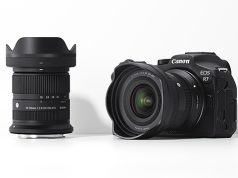
Melville, NY—Canon USA officially introduced the next-gen EOS-1D X Mark III camera at CES 2020. The DSLR is the successor to the company’s award-winning EOS-1D X Mark II. Moreover, the new flagship DSLR was engineered using extensive feedback from professional sports, photojournalist, wildlife and wedding photographers.
At its core is a new 20.1-megapixel, full-frame CMOS image sensor and a newly designed high-detail low-pass filter. They work with the new Digic X image processor to achieve an ISO range of 100–102,400, which is expandable from ISO 50 to ISO 819,200 (stills).
“When engineering and designing the new flagship camera, Canon’s top priority was collecting and implementing extensive user-feedback from a variety of professionals,” said Kazuto Ogawa, president and chief operating officer, Canon USA., Inc. “In the end, the outcome is at first glance a familiar tool; but in reality, it’s so much more—a camera unlike anything the company has introduced before. Canon is eagerly waiting to see what timeless memories professional image makers capture with this new camera.”

Ogawa added that the new sensor, LPF and processor “will help to provide professional photographers with a fast and powerful tool to capture images with a greater level of resolution, higher sensitivity, reduced moiré and improved image quality in higher ISO ranges with reduced noise.”
Furthermore, using a single Digic X processor along with a Digic 8 dedicated for AF/AE, the new DSLR’s image-processing performance surpasses that of its predecessor. And it does so while reducing power consumption. The Digic X is capable of 3.1 times the processing and 380 times the Dual CMOS AF processing performance compared to the EOS-1D X Mark II.
Key Video Features; Revamped AF System
Another benefit is the ability to internally record 5.5K RAW video and uncropped 4K 60p from the 5.5K readout in Canon Log with 10-bit 4:2:2. Canon Log lets users record 4K as well as 1080p video files with 12 stops of high dynamic range and wide exposure latitude. As a result, it’s easier to coordinate color settings with other Canon cameras in multi-camera setups. In addition, an HDMI terminal transmits 4K 60p data to another device for display or recording.
What’s more, the camera employs a completely overhauled, faster autofocus (AF) system. The 191-point AF system with 155 all-cross-type points helps users to more quickly track a subject; it also aids in maintaining focusing accuracy for various shooting situations, such as tracking a fast-moving leopard. The redesigned AF sensor incorporates a square pixel design based on an image sensor; this essentially provides it with 28x higher resolution at the center.
In addition, a smart controller was built into the AF-on button for faster control of the AF point selection. And its Dual Pixel CMOS AF technology has 3,869 manually selectable AF positions and 525 automatic areas. Moreover, in live view, the AF system supports face, head and eye detection AF tracking. Eye detection AF locks in on the eye of a moving subject. AF/AE tracking is also supported during high-speed burst shooting in live view; this allows the camera to capture at 20 fps in RAW and RAW + JPEG formats using its mechanical or silent shutter.

Also notable, using the optical viewfinder, the DSLR achieves 16-fps bursts with reduced time lag and image blackout. What’s more, whether shooting through the OVF or LCD, the EOS-1D X Mark III shoots 1,000+ images in a burst using its dual CFexpress cards.
Additional Canon EOS-1D X Mark III Features
The camera’s communications functions were also upgraded to support the needs of pro photographers. It incorporates a dedicated network tab in the menu. This permits photographers to more easily set up network functions, such as connections via built-in gigabit Ethernet; Wi-Fi connectivity; Bluetooth connectivity; as well as destinations like FTP servers, EOS Utility or Browser Remote functions. In addition, it supports encrypted network authentication for advanced network users.
Also, enhanced operational controls include button illumination; touch AF; and a multi-controller to allow users to select the desired AF point more easily. The dust- and weather-resistant camera also provides face-priority E-TTL II metering. This enables it to automatically adjust to provide the appropriate output of an external flash when it detects a face.

Additional features include: a digital lens optimizer to correct potential lens diffraction or aberration based on the design of each individual lens; and the ability to capture stills in 10-bit using the HEIF (High-Efficiency Image File) format with a wider dynamic range and greater color representation compared to 8-bit JPEG.
The camera also supports faster speed and an improved user interface for networking when using the optional WFT-E9 wireless file transmitter or built-in gigabit ethernet port.
The Canon EOS-1D X Mark III DSLR body and the WFT-E9 wireless file transmitter are both scheduled to ship in mid-February 2020. They will retail for $6,499 and $649.99, respectively.





